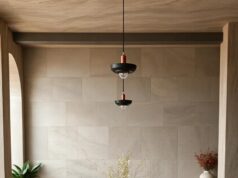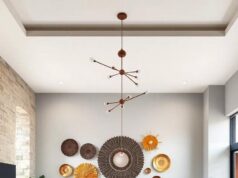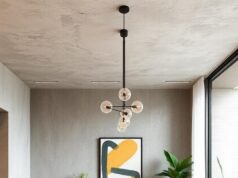In an era defined by fluidity and adaptability,the very concept of home is undergoing a meaningful transformation. As our lives become increasingly dynamic, so too do the spaces we inhabit, prompting a shift in how we visualize and utilize our living areas. Among the most noteworthy trends is the rise of multi-functional dining spaces—once merely a place to gather for meals, now an essential hub for connection, creativity, and versatility. This article delves into the evolution of dining areas within modern homes,exploring how innovative design,burgeoning lifestyles,and the desire for efficient use of space converge to breathe new life into this fundamental setting. Join us as we uncover the myriad ways in which these transformative spaces are reshaping the way we dine, work, and live, reflecting the ever-changing rhythm of contemporary life.
Embracing Versatility in Home Design Through Multi-Functional Dining Areas
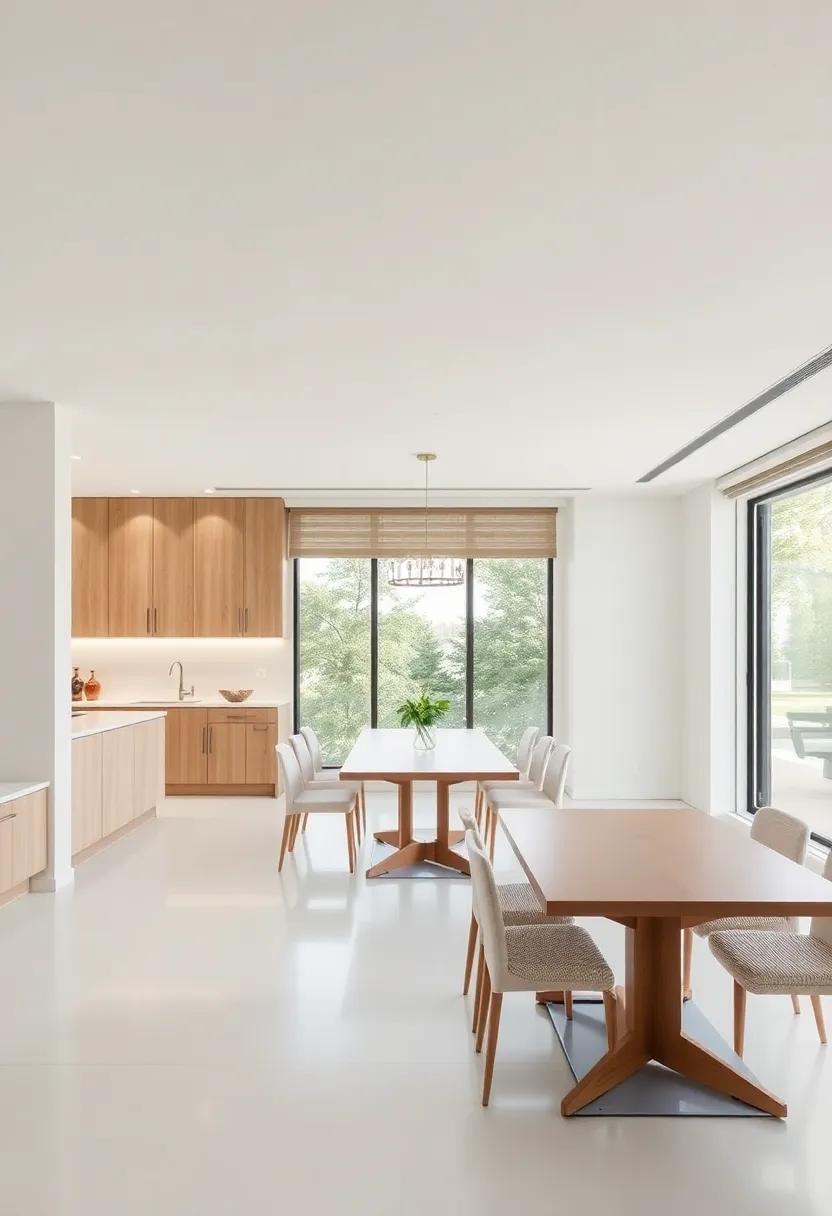
In today’s rapidly changing living environments, adaptability is key. Multi-functional dining areas offer a seamless blend of practicality and style, allowing homeowners to maximize their spaces without sacrificing aesthetics. Consider the following advantages of these versatile areas:
- Flexible Seating: Use a combination of benches, stools, and chairs that can easily be rearranged for gatherings or intimate dinners.
- Integrated Storage: Opt for dining tables with built-in storage solutions for cutlery, linens, and other essentials.
- Dual-Purpose Designs: Choose tables that can expand for larger gatherings or collapse for everyday use, ensuring efficiency.
Moreover, the rise of technology has led to innovative solutions that enhance the multifunctionality of dining spaces. Smart dining tables equipped with charging ports and Bluetooth connectivity facilitate both dining and digital activities, making entertainment a breeze. In addition, the concept of an open-plan layout harmonizes the dining area with the kitchen and living room, encouraging a fluid lifestyle that enhances social interaction. The table below showcases some popular designs that emphasize versatility:
| design Style | Features | Ideal For |
|---|---|---|
| Convertible Table | Expandable and collapsible features | Small apartments and frequent entertainers |
| Storage Bench | Seating with built-in storage | Families and casual dining |
| Bar Height Table | Encourages casual gatherings | Social spaces and small events |
The Art of Combining Dining and Living Spaces for Enhanced Connectivity
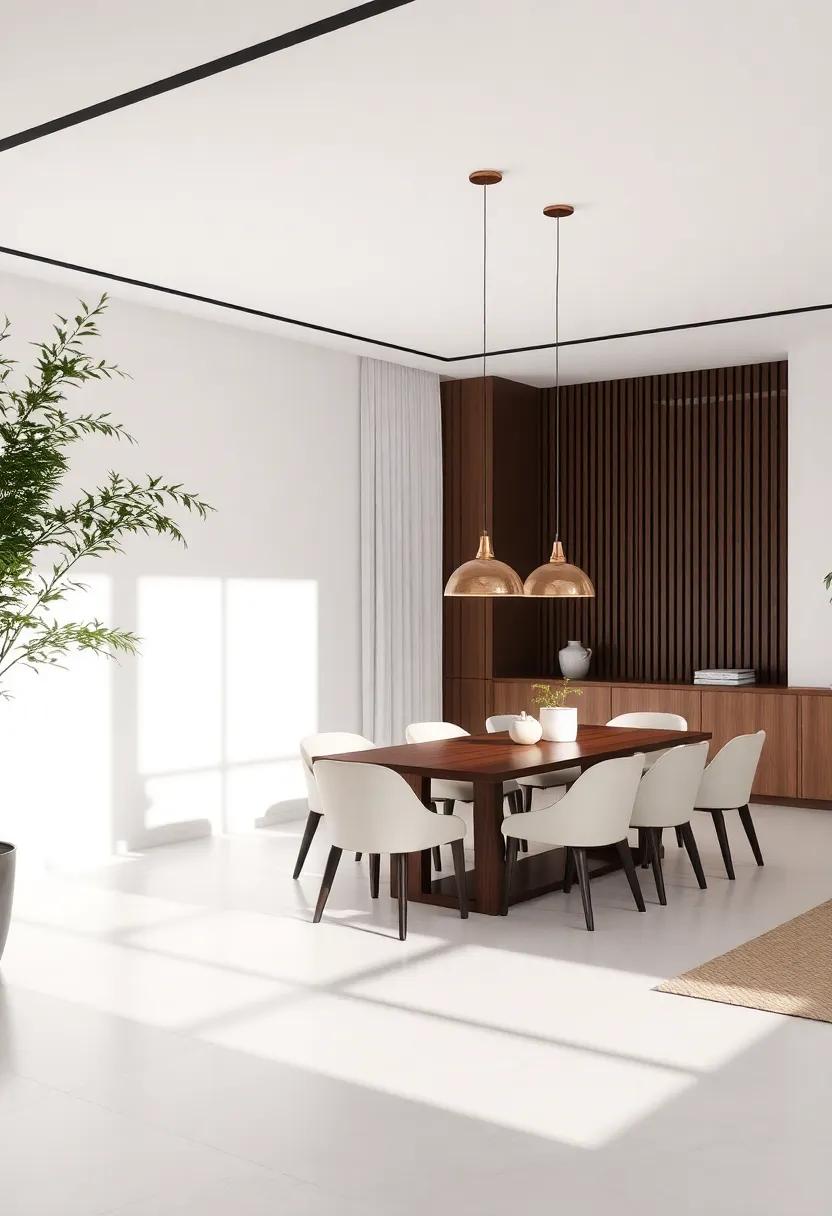
In today’s rapidly evolving home design landscape,merging the dining area with the living space has become a hallmark of innovation. This seamless integration encourages not only functional efficiency but also creates an enhanced atmosphere of togetherness. By utilizing open floor plans, homeowners can facilitate a sense of flow between spaces. Here are some creative ways to achieve this harmonious blend:
- Use a cohesive color palette to unify different zones.
- Select multi-functional furniture, such as dining tables that can double as workspaces.
- Incorporate natural elements, such as plants or large windows, to enhance light and connection.
- Create distinct zones visually through area rugs or lighting, marking the dining section while still maintaining an open feel.
Moreover, this design philosophy not only elevates the aesthetic value but also enriches the social experience. Families and friends can easily shift from dining to lounging, fostering intimate gatherings that capitalize on interactions.Consider the following materials and elements that can enhance this combined space:
| Material | Functionality |
|---|---|
| Wood | Warmth and durability for both dining and living furniture. |
| Glass | Creates an illusion of space while allowing light to flow between areas. |
| Metal | Offers a modern touch and contrasts well with softer materials. |
| Textiles | Brings comfort and coziness to seating areas without compromising style. |
Innovative Furniture Solutions Transforming Traditional Dining Rooms
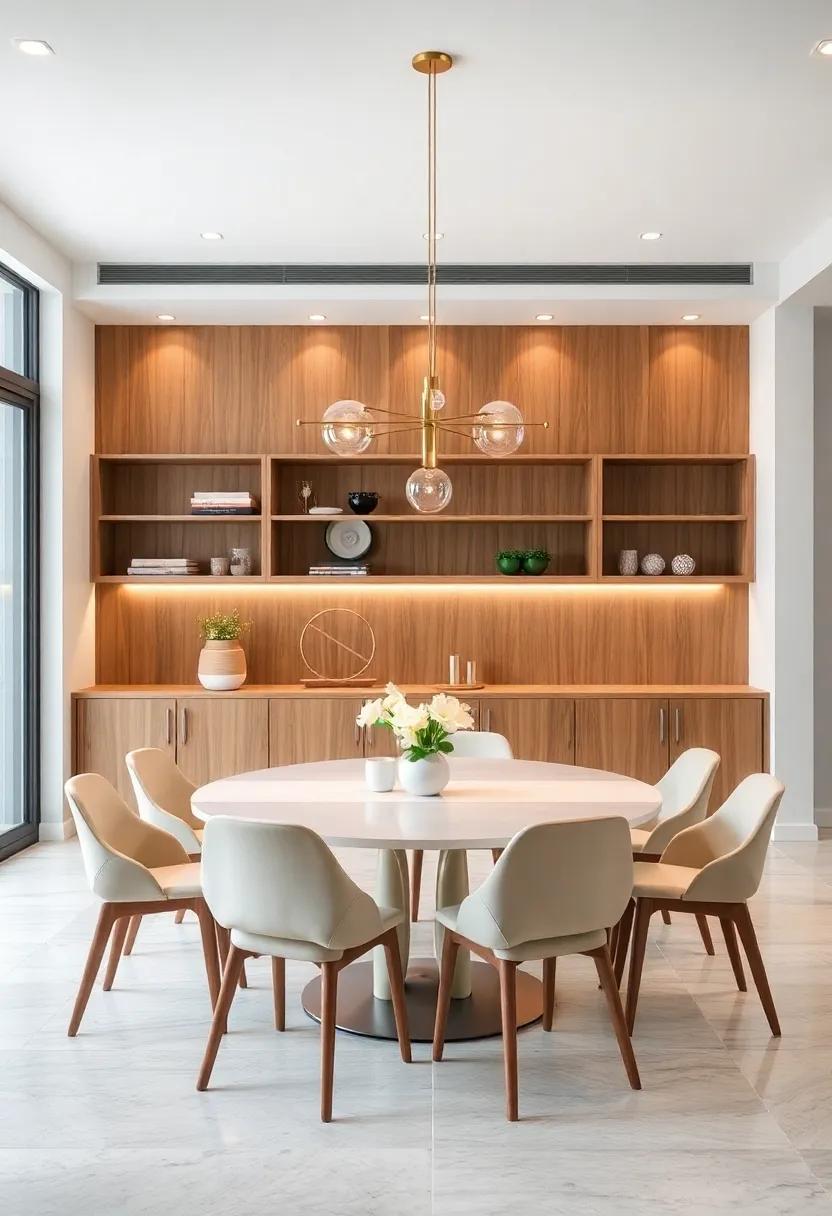
In the ever-evolving landscape of interior design, the integration of innovative furniture solutions has opened up new possibilities for traditional dining spaces. Homeowners are increasingly embracing multi-functional pieces that not only enhance aesthetics but also maximize utility. For instance, extendable dining tables can seamlessly transition from intimate family gatherings to larger host parties, adapting to the dynamic needs of modern living.Coupled with stackable chairs or benches that offer flexible seating arrangements, even the smallest dining areas can feel expansive and welcoming.
Furthermore, the trend of incorporating storage-capable furniture is gaining traction, allowing for a clutter-free environment without compromising style. Consider the use of an elegant sideboard that not only complements the dining decor but also cleverly hides away dinnerware and linens. Alternatively, dining tables with built-in drawers or shelves can double as a workspace or craft station, making the dining area a true multi-functional hub. An overview of some popular innovative furniture solutions illustrates this trend:
| furniture Type | Functionality | benefit |
|---|---|---|
| Extendable Tables | Adjusts size for gatherings | Versatile for any occasion |
| Storage Benches | Sits and stores | maximizes space efficiency |
| Convertible Tables | Transforms into coffee or dining table | Perfect for small apartments |
| Wall-Mounted Drop Tables | Space-saving dining | Ideal for compact areas |
Creating Inviting Atmospheres with Multi-Purpose Dining Arrangements
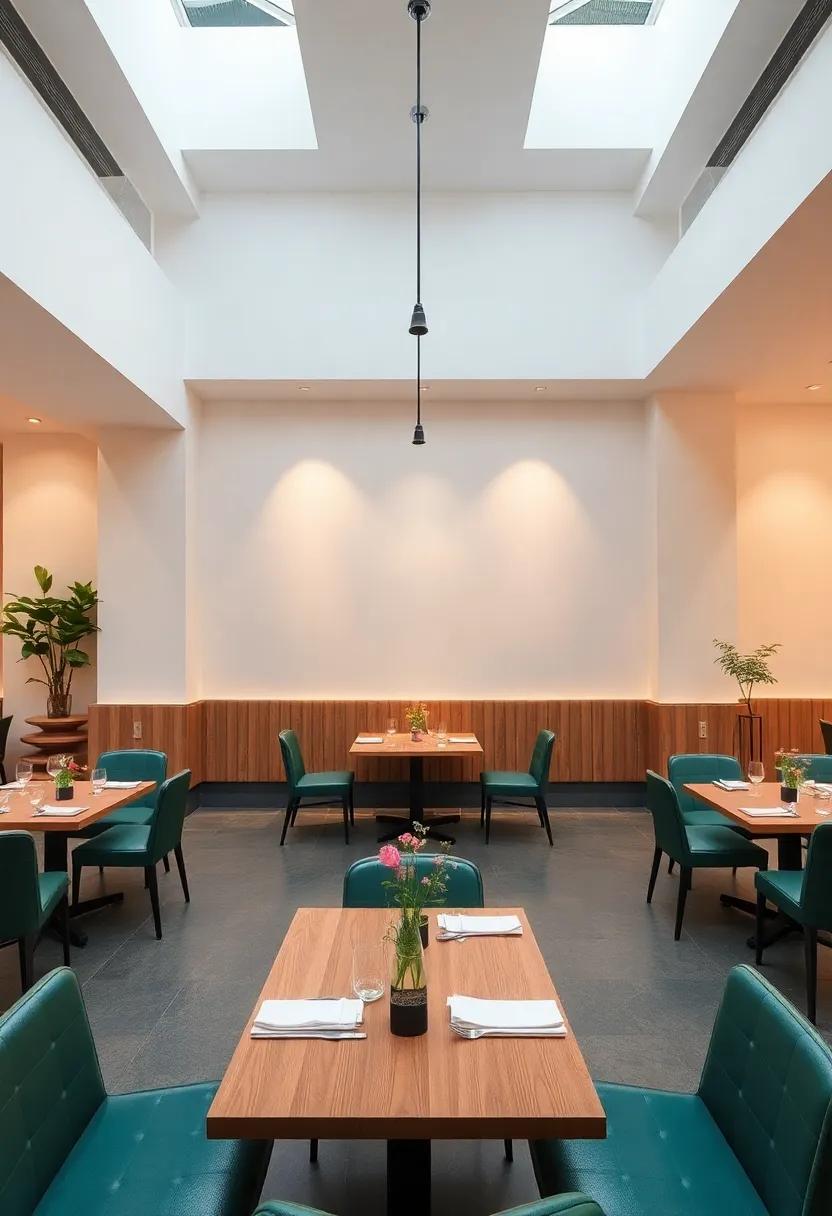
Modern dining arrangements have evolved beyond the mere provision of space for meals; they now serve as multifunctional hubs that encourage social interaction and creativity. By integrating various design elements, these areas can transform into cozy family gathering spots, lively entertaining zones, or even serene workspaces. Key components that contribute to this inviting atmosphere include:
- Flexible Furniture: Tables and chairs that can easily be rearranged or expanded to accommodate different numbers of guests.
- Ambient Lighting: Layered lighting options, such as pendant lights and dimmable sconces, to create a warm and welcoming vibe.
- Textiles: Soft furnishings, such as cushions and table runners, that add texture and comfort to the dining experience.
incorporating elements that promote functionality can further enhance the adaptability of dining areas. For instance, a built-in storage solution not only organizes tableware but also cleverly conceals clutter. Multi-purpose dining tables can double as workspace or craft stations,highlighting the versatility of the space. Consider the following tips for creating an ideal setting:
| Tip | Description |
|---|---|
| Use Modular Seating | Opt for benches or ottomans that can be easily moved to fit your needs. |
| Incorporate Greenery | Add plants for a touch of nature,enhancing both aesthetics and air quality. |
| Designate Zones | Create specific areas for dining, working, and relaxing within the same space. |
Culinary Spaces That Foster Connection and Creativity
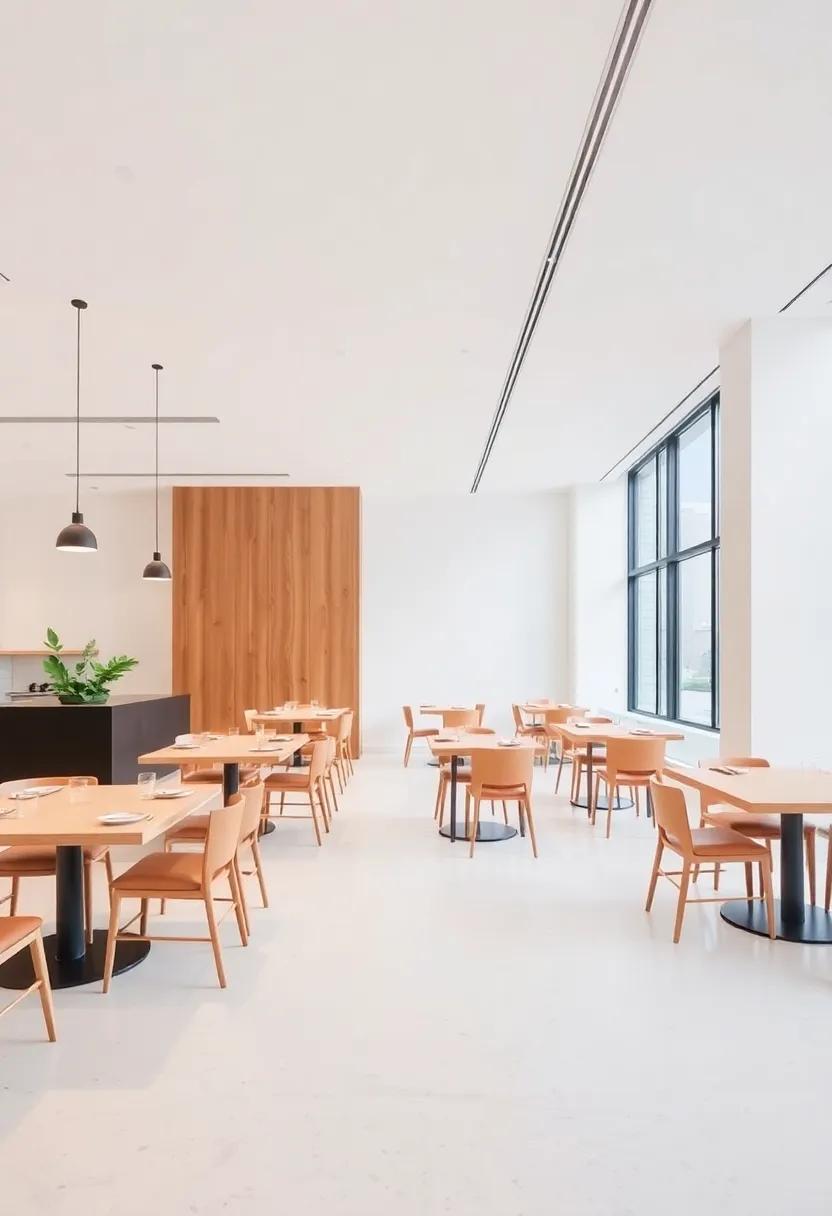
in the heart of the home,the kitchen has evolved beyond mere functionality to become a holistic space that nurtures both creativity and connection.Multi-functional dining areas now serve as vibrant epicenters where culinary adventures unfold and lifelong memories are crafted. Incorporating elements such as:
- Open layouts that encourage interaction between cooks and guests
- Flexible furniture, like expandable tables, that adapt to different occasions
- Cozy nooks designed for intimate gatherings or lively family meals
With the introduction of multi-use islands, not only do these spaces facilitate meal preparation, but they also provide a casual gathering point for conversation, collaboration, and creativity.The blend of colors, textures, and innovative technology, such as smart appliances, embodies a contemporary approach to dining that harmonizes efficiency with artistic expression.
Moreover, these innovative culinary spaces are designed to break down barriers and foster engagement. They allow families to co-create meals while sharing stories and laughter, transforming cooking into a shared experience. Key features that enhance this communal atmosphere include:
- Sliding doors or partitions that connect to outdoor spaces,blurring the lines between indoor and outdoor dining
- Interactive elements,such as chalkboard walls for handwritten recipes or cooking tips
- Multimedia setups that enable culinary shows or playlists to set the mood
By thoughtfully curating these elements,modern homes achieve a synergy of function and emotion,leading to moments of creativity that not only satisfy hunger but also nourish relationships.
Efficient Layouts That Maximize Space in Compact Homes
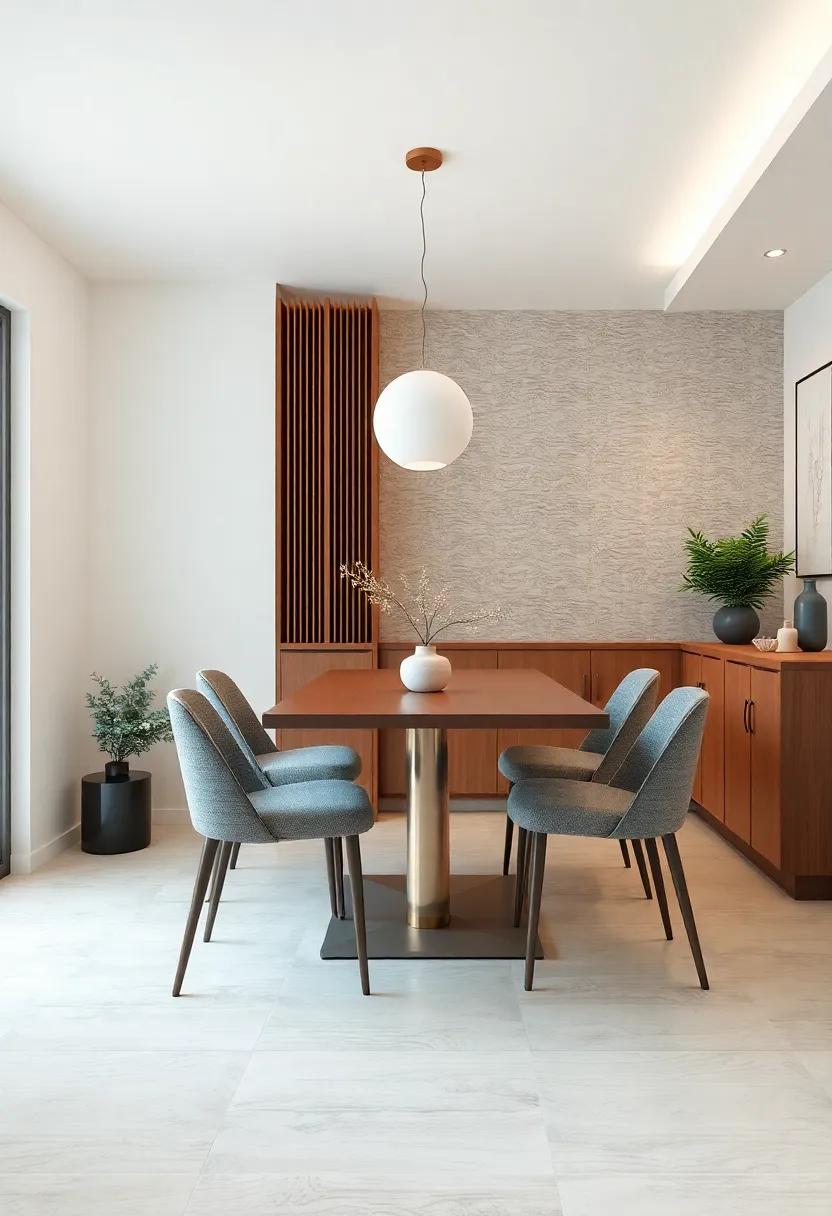
In compact homes, every square inch counts, making efficient layouts paramount for maximizing utility and comfort. One of the most innovative solutions for these spaces is the creation of multi-functional dining areas that serve various purposes throughout the day. Imagine a dining table that converts into a workspace or a breakfast nook that doubles as a cozy reading corner.Utilizing foldable furniture or extendable tables can allow homeowners to adapt their spaces on-the-fly, encouraging flexibility without compromising style. With clever storage solutions integrated within furniture—such as benches with hidden compartments or wall-mounted shelves—these dining areas can remain uncluttered and inviting.
The strategic use of zoning also plays a critical role in optimizing compact living spaces. By defining different functional areas within a single room, you can enhance both the form and function of a home. As an exmaple, consider using rugs or lighting to separate a dining zone from a living area, or incorporating a sliding partition to create privacy when needed. This layout not only maximizes the available space but also promotes a sense of organization and flow. To illustrate how various elements contribute to these space-saving strategies, here’s a concise overview:
| Element | Benefit |
|---|---|
| Extendable Table | Able to accommodate guests without taking up permanent space. |
| Foldable Chairs | Easy to store when not in use, freeing up valuable floor space. |
| storage Benches | Offers seating while providing hidden storage for items like linens or tableware. |
| Sliding Partitions | Creates flexible privacy options and can easily be retracted to open up space. |
Blending Functional and Aesthetic Elements in Dining Design
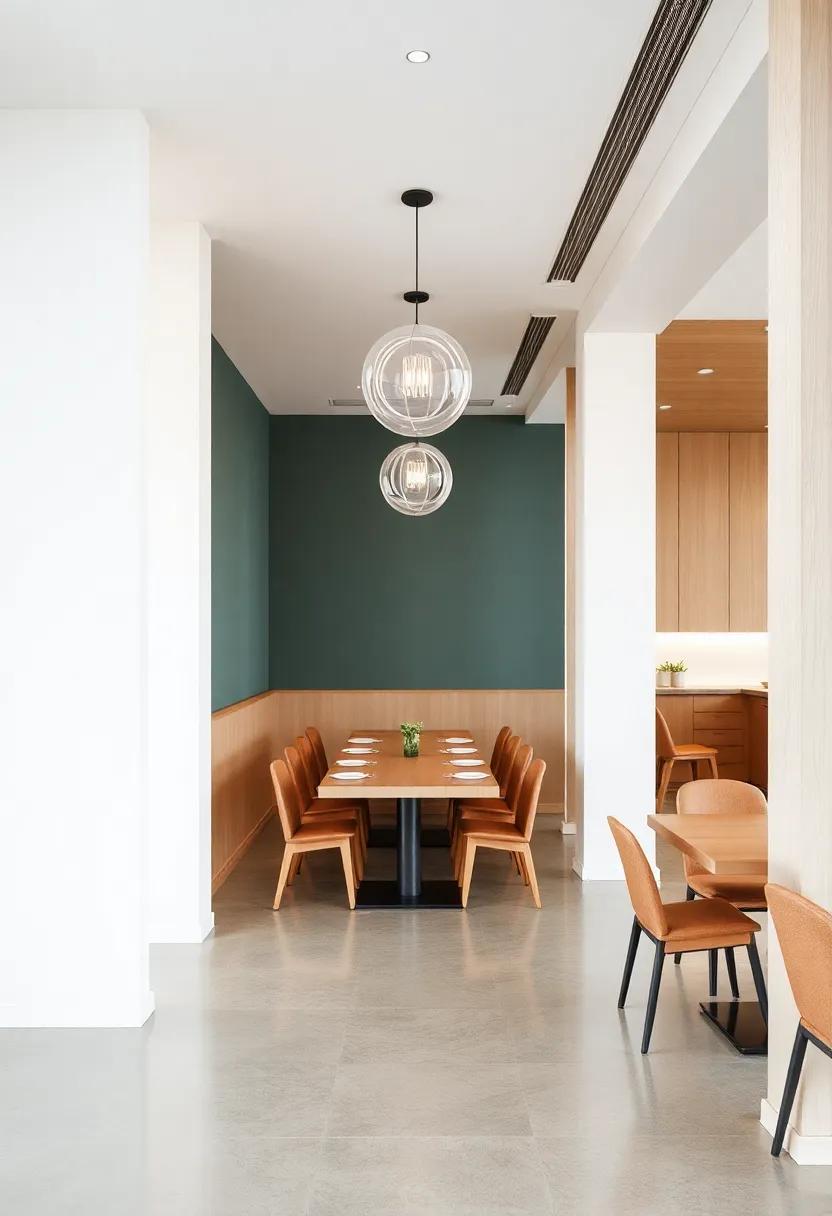
in the evolving world of interior design, merging functionality with aesthetic appeal has become paramount, especially in dining spaces. Homeowners are increasingly seeking to create areas that not only serve culinary purposes but also provide an inviting atmosphere for social gatherings. This blend is achieved through thoughtful selection of materials, color palettes, and furniture styles. Elements such as a stylish dining table, ergonomic chairs, and adaptable lighting can transform a simple dining nook into a multi-use hub. Features like built-in benches or foldable tables are ideal for maximizing space while maintaining a chic look.
Additionally,incorporating modern technologies enhances the usability of dining areas,allowing homeowners to switch seamlessly from formal dining to casual entertaining. A few essential elements that contribute to this balance include:
- Versatile Furniture: Items that can serve multiple purposes, like storage ottomans or extendable tables.
- Smart Storage Solutions: Innovative cabinetry that hides away dining essentials, keeping spaces uncluttered.
- Multi-Layered Lighting: Adjustable lighting fixtures that accommodate different moods and occasions.
- Decorative Accents: Stylish tableware and art pieces that enhance visual interest.
| Element | Functionality | Aesthetic Appeal |
|---|---|---|
| Extendable Dining Table | Accommodates guests | Sleek, modern design |
| Wall-Mounted Shelves | Extra storage | Stylish display |
| Statement Pendant Lights | Brighten the area | Focal point of design |
This harmonious integration of function and style not only enhances daily living but also promotes a sense of community within the home. As the trend of multi-functional spaces continues to rise, the dining area stands out as a prime example of how innovative design can improve both the practicality and beauty of everyday life.
The Role of Natural Light in Multi-Functional dining Spaces
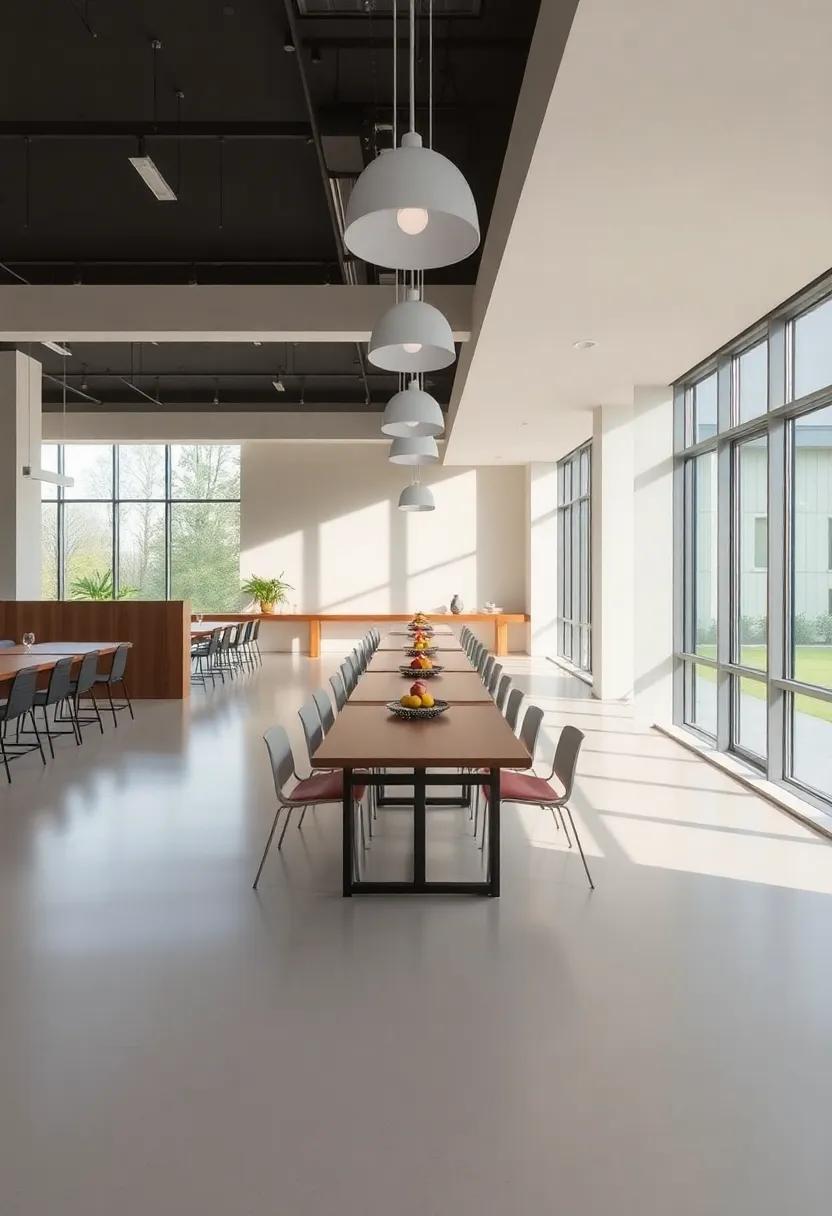
Natural light is an often-overlooked component that can redefine the ambiance and versatility of multi-functional dining spaces. By maximizing exposure to sunlight, homeowners can create an inviting atmosphere that fosters connection and comfort during meals, work, or leisure activities. Incorporating features such as large windows, skylights, or glass doors can seamlessly meld indoor and outdoor spaces, allowing the beauty of nature to enhance everyday experiences.In this context, the benefits of natural light include:
- Enhanced mood: Sunlight boosts serotonin levels, promoting a positive, energetic environment.
- Visual Appeal: Natural light highlights the beauty of decor, fixtures, and food, creating a more enjoyable dining experience.
- Energy Efficiency: Utilizing daylight reduces the need for artificial lighting,ultimately lowering energy costs.
Furthermore, the strategic use of natural light supports the flexibility of dining areas that serve multiple purposes. During the day, ample light encourages work-from-home productivity, while in the evenings, the same space can transform into an intimate dining setting. Incorporating adjustable window treatments can further allow residents to control the amount of light entering the space, providing adaptability for different occasions. Below is a simple comparison of lighting options that can complement a multi-functional dining area:
| Lighting Type | Benefits | Considerations |
|---|---|---|
| Natural Light | Invigorates space, reduces energy costs | Dependent on weather and time of day |
| Ambient Lighting | Creates a warm, welcoming atmosphere | Can be harsh if not diffused properly |
| Task Lighting | Enhances focus on dining or work activities | May require additional sources for balance |
Color Palettes and Textures That Define Modern Dining Experiences
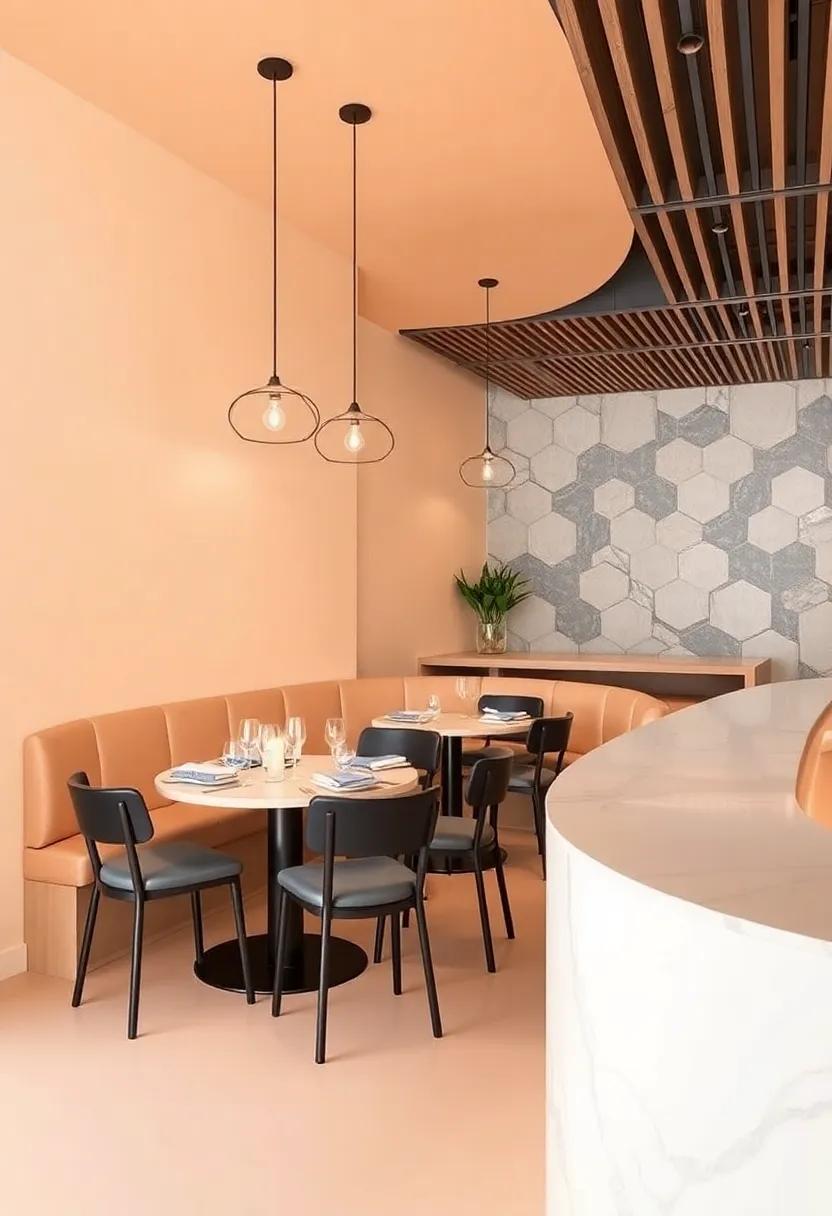
In the realm of contemporary dining, the choice of color palettes and textures plays a pivotal role in crafting an inviting atmosphere. earthy tones like olive green, terracotta, and muted blues create a warm foundation, promoting a sense of calm and comfort. These colors are often complemented by natural textures such as reclaimed wood, woven textiles, and ceramics, which not only enhance aesthetic appeal but also foster a deeper connection to the environment. additionally, bursts of color through accents like vibrant tableware or statement wall art can invigorate the space, making it feel both lively and personal.
As we look towards practical innovations in design, incorporating layered textures further elevates multi-functional dining areas. Soft furnishings, such as upholstered chairs and cushioned benches, provide comfort during meals while also serving as cozy reading nooks or workspaces. This blend of functionality and style encourages seamless transitions from casual dinners to more formal gatherings. Key elements to consider include:
- Natural materials: Bamboo, linen, and jute bring warmth and sustainability.
- Bold accent colors: Radiant chair cushions or striking table settings can energize the space.
- Textured wall finishes: Techniques like plaster or wallpaper add depth and dimension.
Integrating Technology for Seamless Multi-Functional Dining
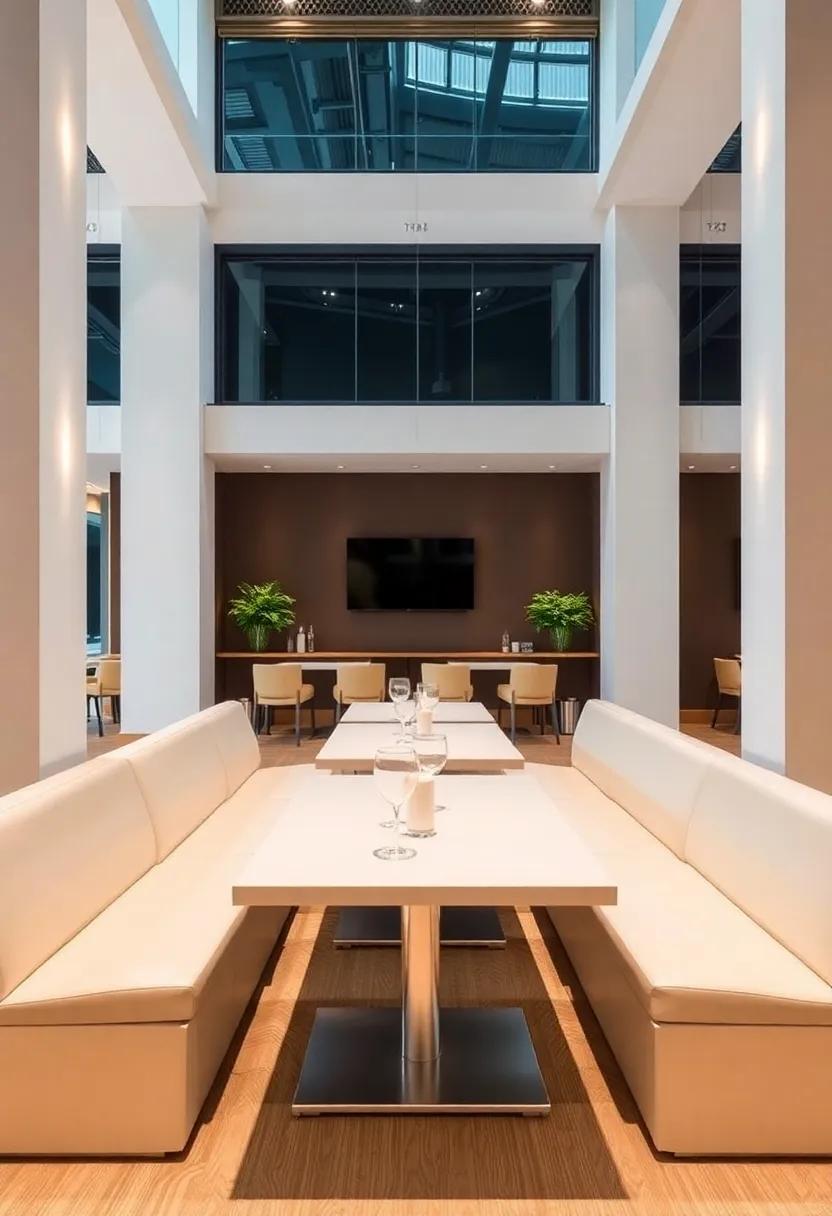
In the heart of every modern home lies the concept of efficiency, where technology seamlessly integrates with multifaceted living spaces. Imagine a dining area that effortlessly transforms throughout the day—morning coffee and emails flow into afternoon family meals, which then transition into evening entertainment. Through the use of smart furniture and appliances, homeowners can now enjoy customizable experiences tailored to their daily routines. Features such as adjustable tables, smart lighting that transitions from bright for work to soft for dinner, and wireless charging stations embedded right into the surface create a harmonious environment that caters to multiple needs.
Moreover, the rise of apps and connected devices has revolutionized the dining experience. Homeowners can now control ambient settings, music, and even meal preparation through voice commands or mobile interfaces. Consider the following advancements that exemplify this trend:
- Smart Refrigerators: Allow users to manage grocery inventories and create meal plans through digital screens.
- Automated Wine Cabinets: Maintain optimal serving conditions and provide recommendations based on available selections.
- Integrated Cooking Systems: Connect with smart home hubs and provide interactive cooking instructions.
Sustainable Choices That Enhance the Dining Experience
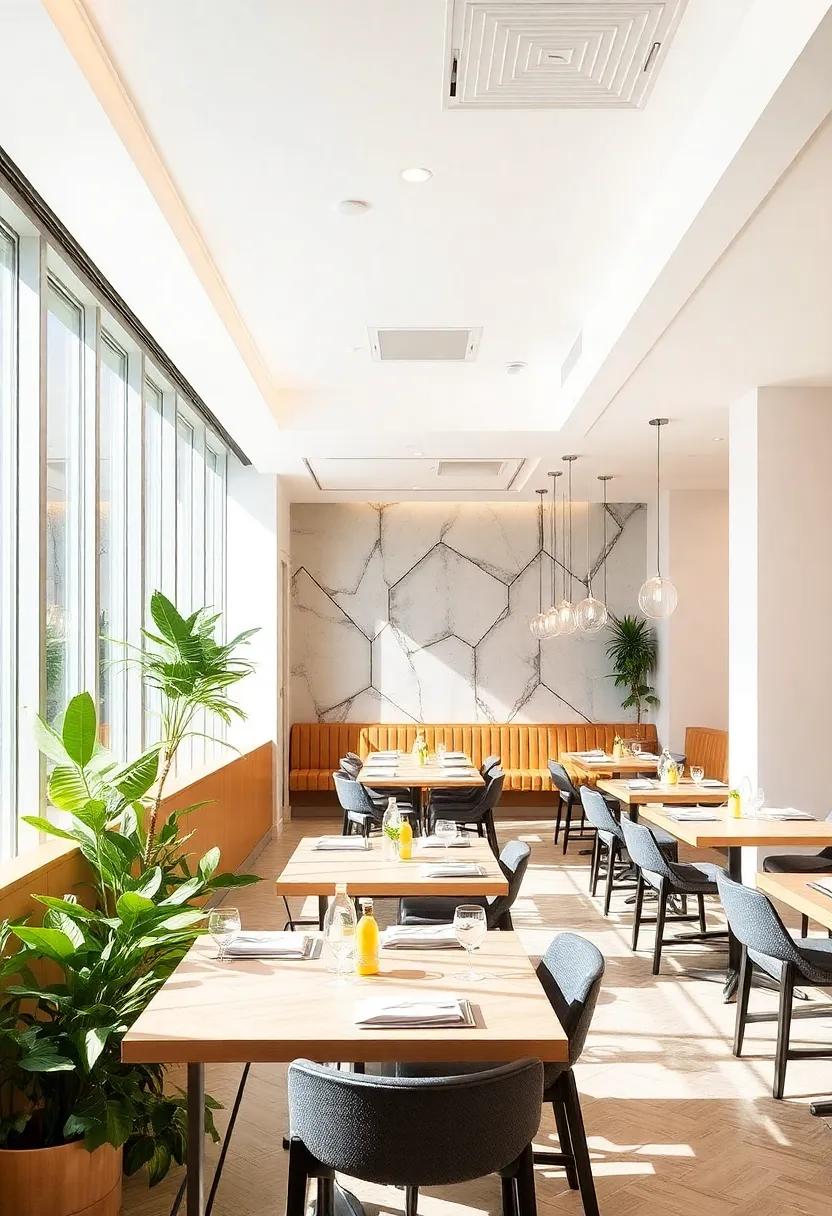
incorporating sustainable choices into dining areas not only serves the environment but also elevates the overall dining experience. When selecting materials for multi-functional spaces, consider using reclaimed wood and bamboo, both renowned for their eco-friendliness and aesthetic appeal. These materials introduce a natural warmth that complements various design styles, from minimalist to rustic. Additionally, opting for upcycled furniture pieces not only reduces the carbon footprint but also adds unique character and history to the dining area.
Moreover, the choice of tableware can enhance both sustainability and style. Transitioning to biodegradable dishes and organic textiles for table settings reflects a commitment to eco-conscious living while enriching the dining experience with thoughtful design. Consider curating your space with local artisans’ handmade pieces; they often embody sustainable practices that support community economies. Here’s a simple glance at options for eco-pleasant dining accessories:
| Item Type | Sustainable Option | Benefit |
|---|---|---|
| Tableware | Biodegradable Plates | Environmentally friendly and stylish |
| Textiles | Organic Cotton Napkins | Durable and chemical-free |
| Decor | Reclaimed Wood Centerpieces | Adds character and supports local artisans |
Family Gatherings Redefined: The Heart of the Home Becomes a Gathering Place
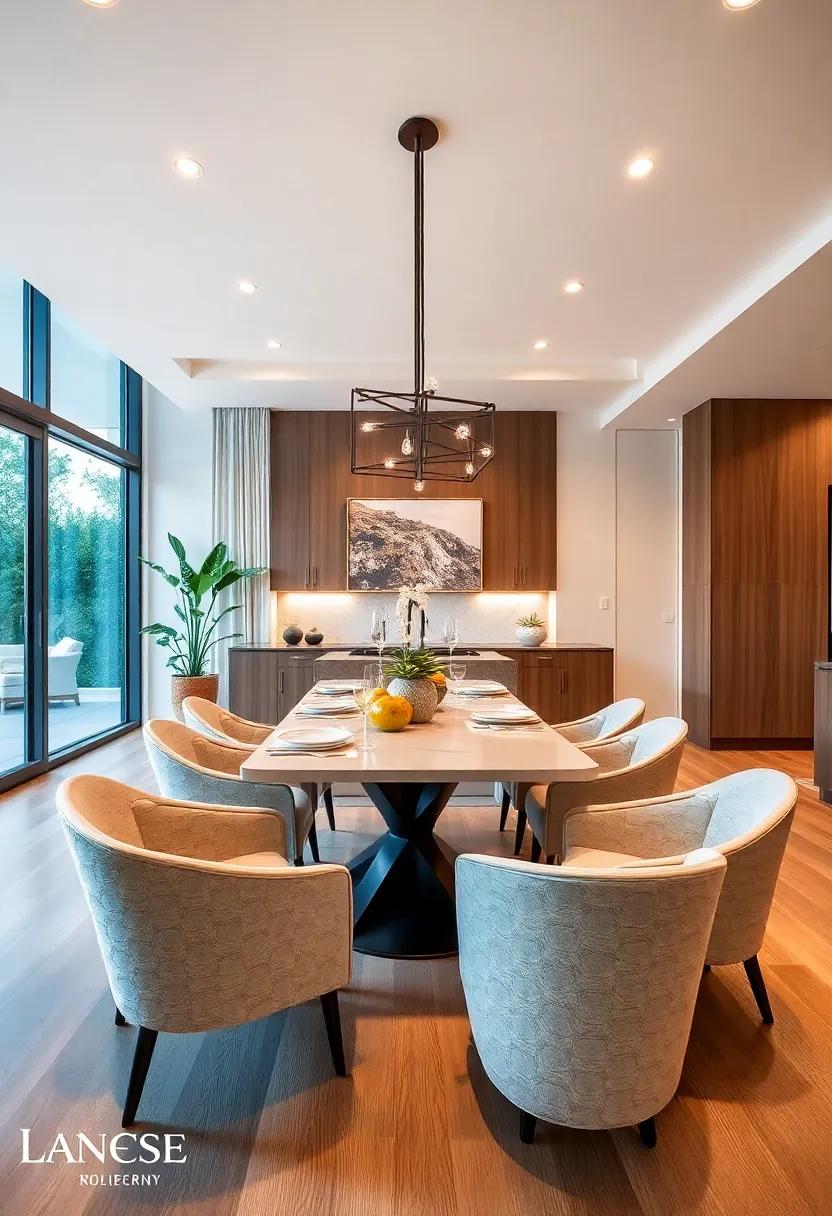
In today’s fast-paced world, family gatherings have taken on a new form as homes become hubs of connection and celebration. The dining area, once solely a place for eating, is evolving into a versatile space that fosters togetherness. No longer just a table surrounded by chairs, these multi-functional dining areas invite creativity, featuring bold designs and flexible layouts that accommodate various activities. From intimate dinners to lively game nights, families are now able to seamlessly transition between dining and socializing, creating lasting memories in a warm and inviting environment.
With thoughtful design elements, such as extendable tables and modular seating, these spaces are tailored to meet the diverse needs of family life. Homeowners can integrate features like built-in storage solutions and ambient lighting, enhancing both functionality and atmosphere. Additionally, multifunctional dining areas often incorporate technology, allowing for easy connectivity and entertainment options.Families can engage in everything from cooking classes to movie nights, ensuring the heart of the home beats stronger than ever. Consider the benefits of transforming your dining space:
- Flexible Layouts: Easily rearrange for different occasions.
- Integrated Technology: Smart devices for seamless entertainment.
- Family-Centric Design: Create a welcoming atmosphere for all ages.
- Functional Decor: Stylish storage solutions to keep the space organized.
Incorporating Outdoor Elements for Fresh Dining Experiences
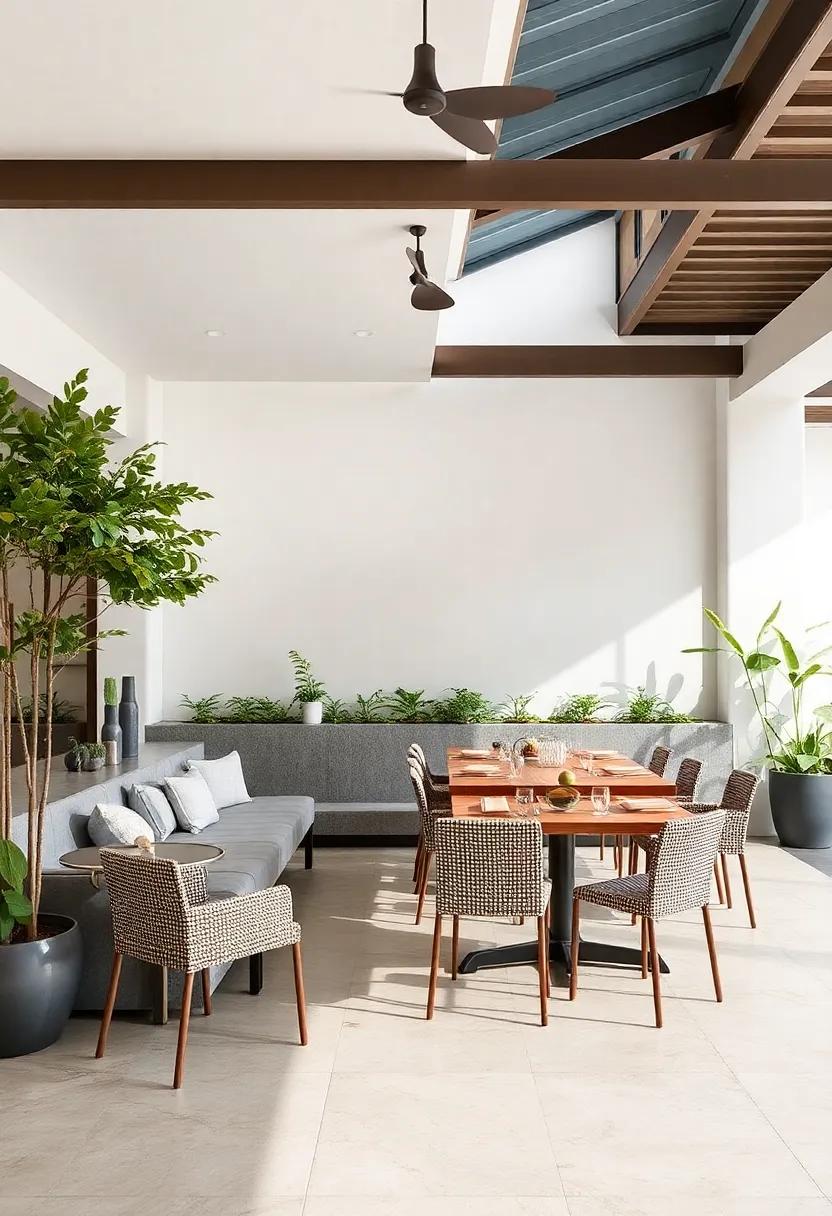
Bringing the great outdoors into the dining experience can invigorate mealtime and foster a deeper connection with nature. Imagine dining al fresco,surrounded by lush greenery or enjoying a meal under a starlit sky. To achieve this, homeowners are integrating elements such as biophilic design components, which seamlessly merge indoor and outdoor environments. Incorporating large glass doors that slide open to a landscaped patio or a rooftop garden allows for a fluid transition between spaces, enhancing the sensory aspects of dining. Consider adding features like a vertical garden or potted herbs to your dining area—these not only serve as functional decor but also contribute fresh flavors right from your home.
Additionally, the use of natural materials in furniture and decor can elevate the overall dining ambiance. Utilizing wooden furnishings, stone tabletops, or woven fabrics creates a warm and inviting atmosphere reminiscent of outdoor picnics. To further enrich this experience, consider investing in outdoor-inspired tableware, such as biodegradable dishes or utensil sets made from sustainable materials. Here’s a simple table showcasing some ideas for incorporating outdoor elements:
| Element | Description |
|---|---|
| Indoor Plants | Bring freshness with potted greenery or hanging plants. |
| Natural Lighting | Maximize sunlight through large windows or skylights. |
| Outdoor Textiles | use weather-resistant fabrics for cushions and table settings. |
Exploring Cultural Influences on Modern Multi-Functional Designs
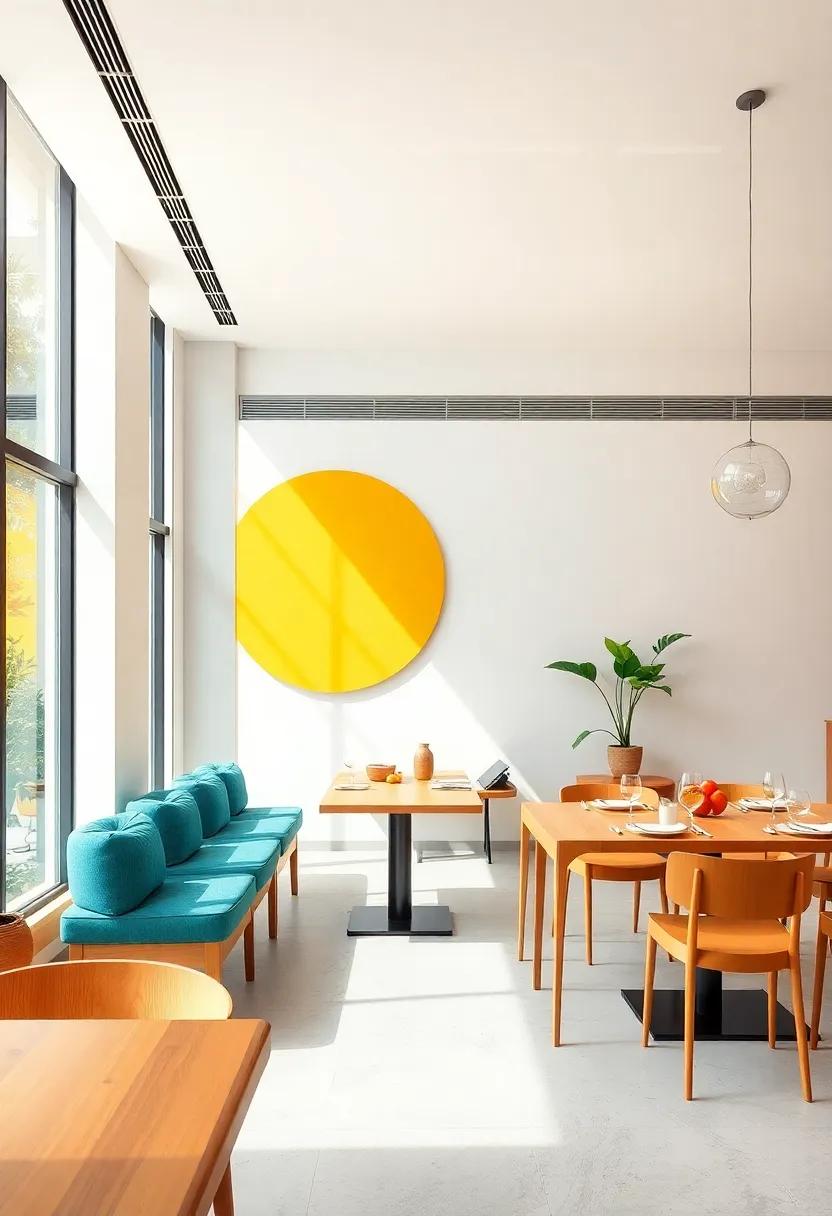
In the pursuit of crafting spaces that cater to diverse lifestyles, modern multi-functional designs reflect a tapestry of cultural influences. As families become more interconnected and dynamic, dining areas evolve beyond mere meal spots into versatile hubs that foster social interactions and adaptability. These transformations draw inspiration from various cultural practices, merging aesthetics with functionality. Notably, techniques from Japanese minimalism emphasize simplicity and natural elements, which inspire seamless transitions between dining, working, and entertaining. In contrast, Mediterranean styles infuse warmth and conviviality, encouraging communal dining experiences that inspire a sense of belonging.
This cultural amalgamation is apparent in the design of modern dining areas, where practical features harmonize with traditional elements. Key attributes frequently enough observed include:
- Expandable furniture: Tables that can shift from intimate settings to larger gatherings.
- Integrated storage: Solutions that conceal tableware and linens for a tidy aesthetic.
- Flexible layouts: Spaces that adapt to different activities throughout the day.
The result is a celebration of diverse heritages, as home environments increasingly reflect personal stories while meeting the demands of contemporary life. This evolution not only enriches the physical space but also fosters connections among family members and friends, grounding modern living in a cultural context that appreciates both function and form.
Aesthetic Inspirations from Around the World for Dining Spaces
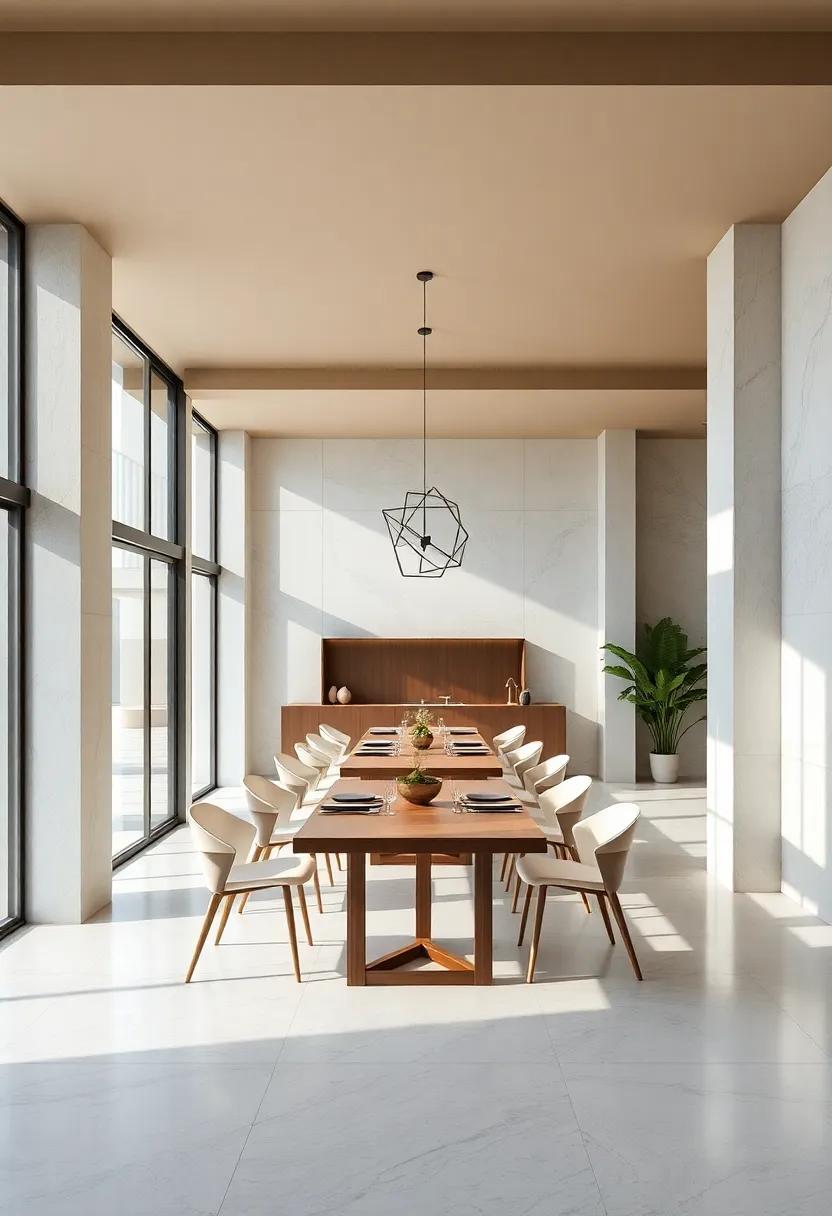
In today’s modern homes, dining spaces have evolved into vibrant reflections of cultural aesthetics, drawing inspiration from various corners of the globe. Scandinavian minimalism emphasizes clean lines and functional elegance, utilizing light woods and neutral tones to create a serene dining experience.Conversely, Mediterranean charm brings warmth and color to the forefront, with rustic wooden tables paired with vibrant ceramics and lush greenery, fostering an inviting atmosphere. Adding touches from Japanese design, such as tatami seating or bamboo accents, can infuse a sense of tranquility and simplicity, making the dining area a peaceful retreat in the hustle of daily life.
embracing Moroccan opulence can transform your dining space into an exotic haven with rich textiles, intricate patterns, and low seating arrangements that encourage communal dining. In contrast, industrial chic invites the raw aesthetic of urban life into homes, using materials like metal and reclaimed wood to create a contemporary yet inviting atmosphere. consider incorporating these global inspirations into your dining area by blending styles; as a notable example, pairing a rustic farmhouse table with sleek Nordic chairs, or incorporating colorful Moroccan lanterns for an eclectic touch. The key is to design a space that resonates with your personal taste while celebrating the beauty of cultural diversity.
Balancing Formality and Casual vibes in Multi-Purpose Areas
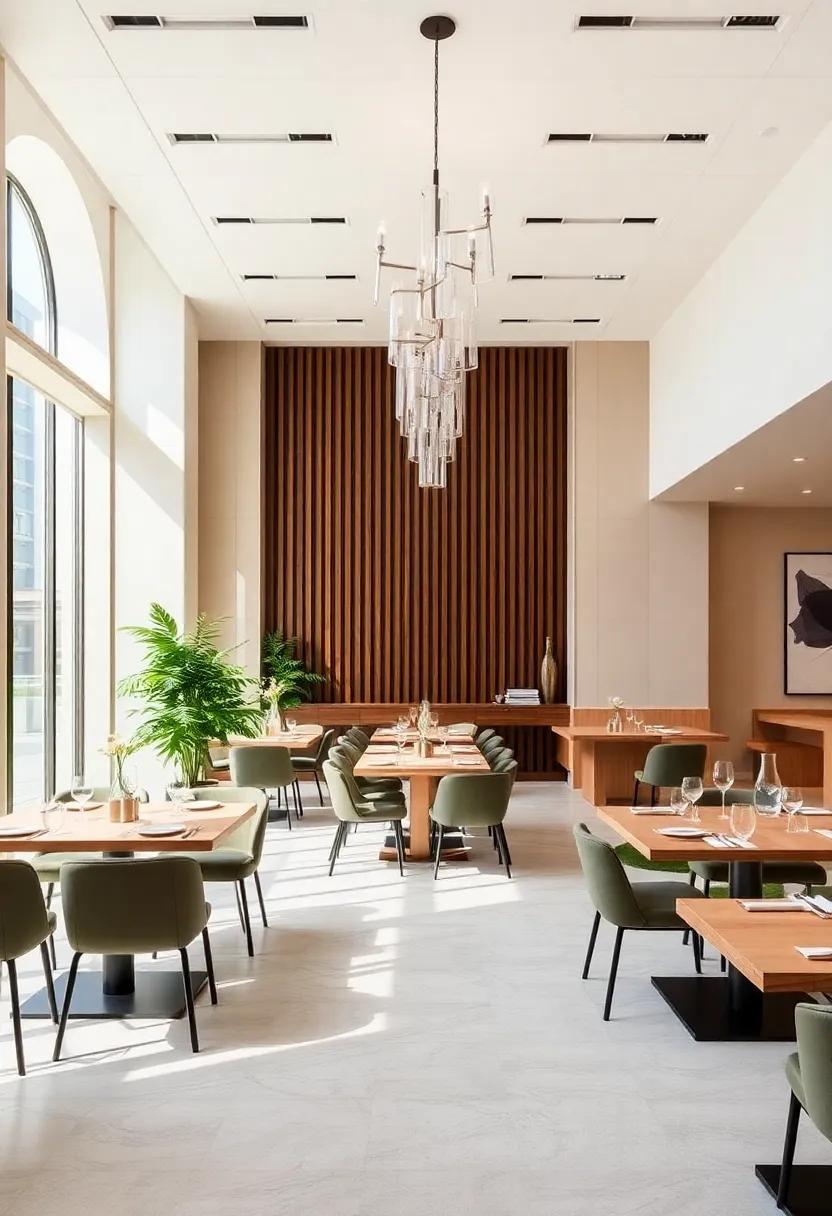
Creating a harmonious atmosphere in multi-purpose dining areas requires a keen understanding of balance between formal and casual elements.This interplay can be achieved through careful selection of furnishings and decor that cater to both complex gatherings and laid-back family meals. Incorporating versatile seating options such as upholstered chairs paired with sleek benches can invite a relaxed vibe, while elegant table settings and statement lighting fixtures maintain an air of refinement.
To enhance the functionality of these spaces, consider layering textures and colors that transition smoothly between occasions. Integrating flexible design elements is essential—opt for tables that can extend for large dinners but fit neatly for everyday use, or add movable screens to create private nooks when needed.Here’s a quick comparison to visualize how different elements can contribute to this delicate balance:
| Element | Formal Vibe | Casual Vibe |
|---|---|---|
| Seating | Upholstered Chairs | Benches with Cushions |
| Table | Wooden Dining Table | Expandable Dining Table |
| Lighting | Chandelier | Pendant Lights |
| Decor | Elegant Tableware | Casual Centerpieces |
Planning for Flexibility in Dining: Furniture and Decor Choices
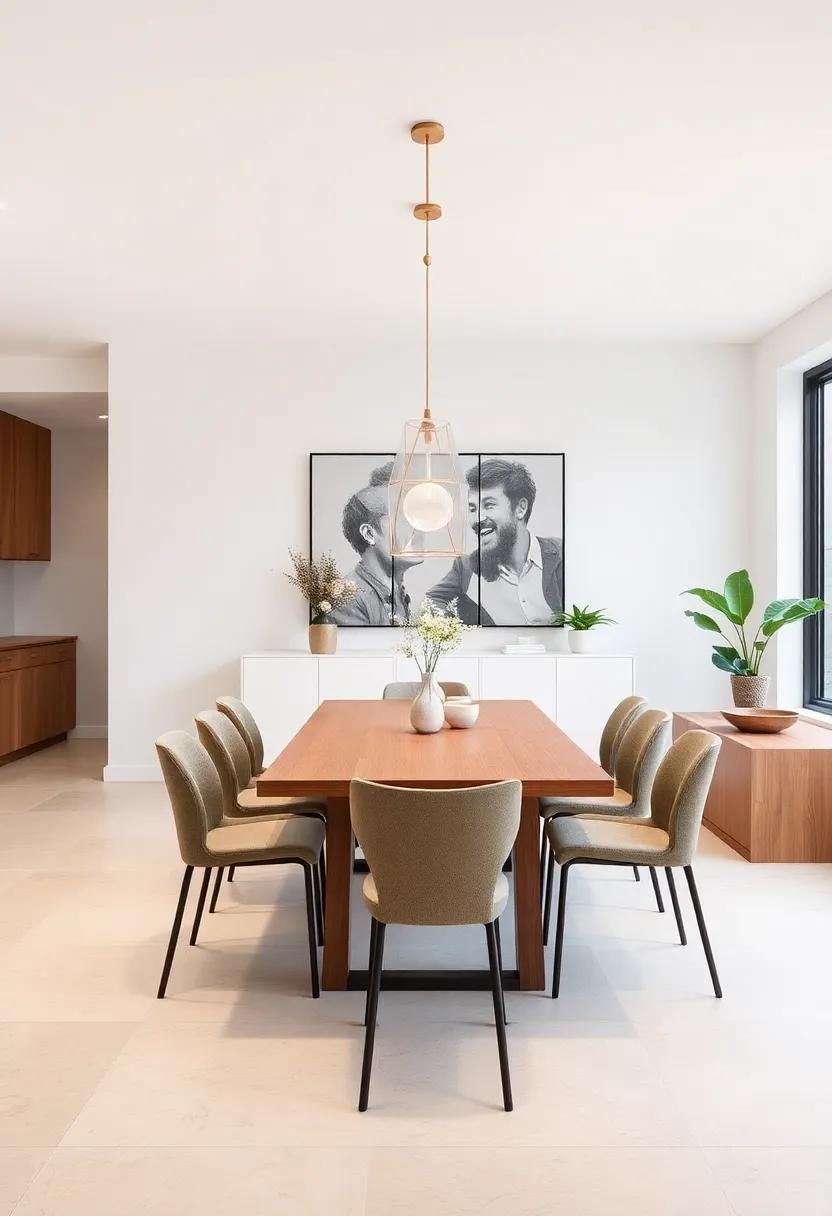
In an age where adaptability serves as a cornerstone of interior design, selecting the right furniture and decor for dining areas becomes essential. Opting for extendable tables allows homeowners to efficiently transition from intimate dinners to larger gatherings. Coupled with stackable chairs or benches, these choices enable seamless movement and reconfiguration of space based on the occasion. Inviting vibrant accents like colorful tableware or seasonal centerpieces can also enhance the ambiance,making a strong statement without overwhelming the senses. A neutral palette can provide a backdrop that complements these bold choices while ensuring the room remains versatile for varying aesthetics.
When choosing decor, wall-mounted shelving can serve functional and aesthetic purposes, offering a space to display decor items while saving precious floor area. Incorporation of multi-purpose lighting, such as adjustable pendant lamps or dimmable wall sconces, can create an inviting atmosphere tailored to any event or mood.Here’s a quick comparison of popular furniture options to weigh their benefits:
| Furniture Type | Benefits |
|---|---|
| Extendable Tables | Flexible size for any occasion |
| Stackable Chairs | Easy storage and reconfiguration |
| Benches | Space-saving and versatile seating |
| Wall-Mounted Shelves | Display without consuming floor space |
Setting the Scene: Lighting and Accessories for Multi-Functionality
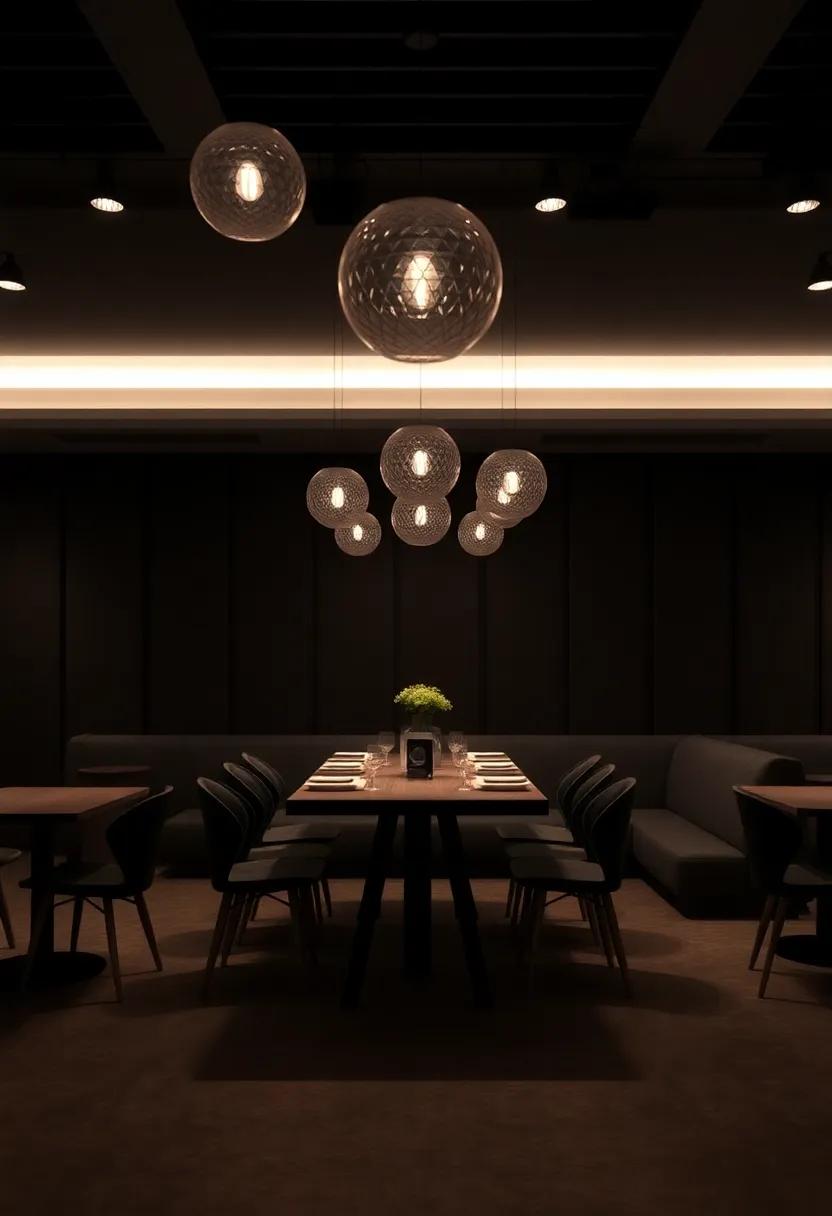
Achieving the perfect atmosphere in a multi-functional dining area hinges on the strategic use of lighting and accessories. Layered lighting plays a crucial role in enhancing the space’s versatility. Incorporate a mix of ambient, task, and accent lighting to ensure the area is well-lit for various occasions. For instance, a central chandelier or pendant light can provide ambient light, while dimmable sconces can create an intimate feel for dinner parties or family gatherings. consider using LED strip lights under shelves or along the edges of the dining table to add a modern touch and highlight the room’s architecture.
In addition to lighting, the right accessories can significantly boost the functionality of the dining area. Decorative elements such as oversized mirrors can create an illusion of space, reflecting light and enhancing the overall brightness. Meanwhile, functional accessories like multi-purpose serving trays, nesting tables, and stylish storage solutions keep the area organized and clutter-free. Incorporate a table runner or seasonal centerpieces that can easily be swapped out to evolve with the occasions held in the space, ensuring your dining area remains a dynamic environment ready for any gathering.
Celebrating Culinary Traditions in Diverse Dining Environments
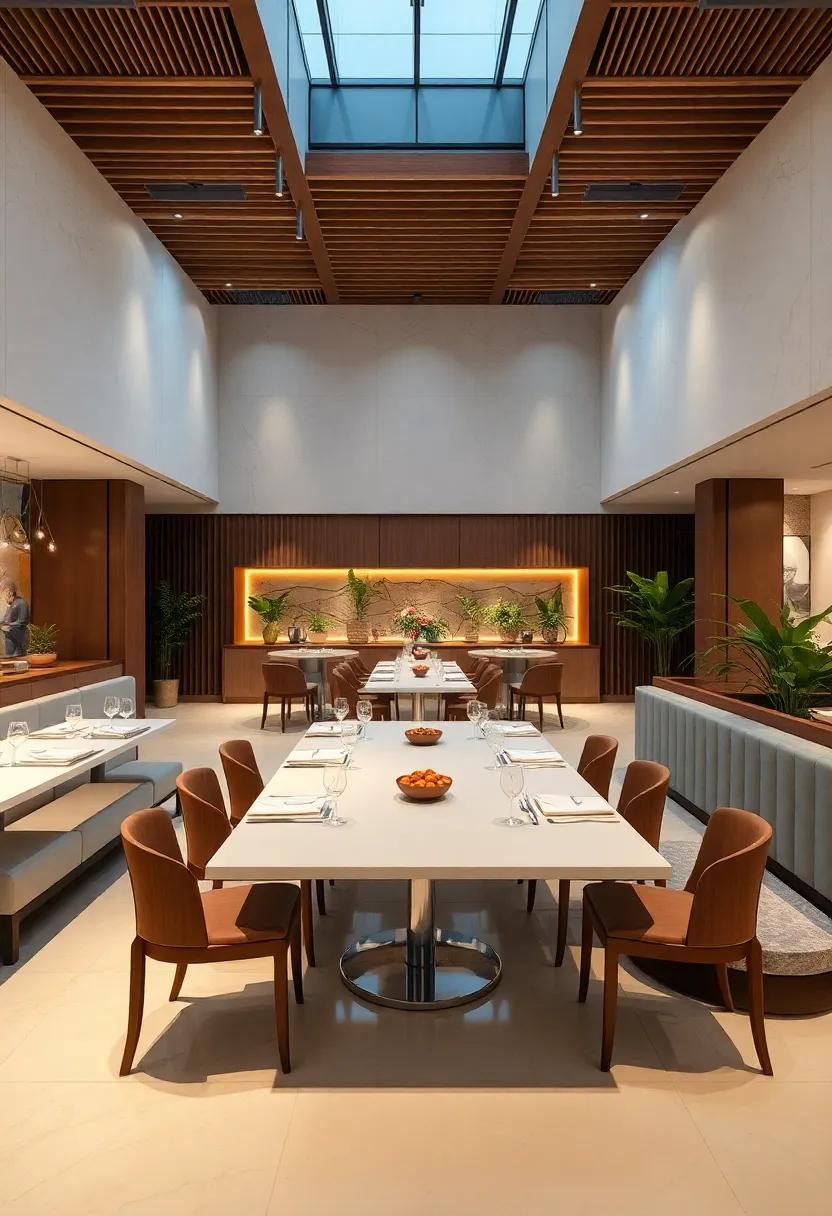
In an era where culinary artistry flourishes, the evolution of dining spaces reflects our collective appreciation for global fare. Today’s multi-functional dining areas not only serve as places for nourishment but also act as cultural crossroads. As families gather around the table, culinary traditions from various backgrounds intermingle, creating a tapestry of flavors and techniques. Whether it’s a homemade pasta dish reminiscent of Italian Sunday dinners or a spicy curry that brings back memories of festive Indian celebrations, these dishes enrich our dining experiences.
to truly embrace this diversity, homeowners are designing their dining spaces to be adaptable and inviting. with an emphasis on functionality, these environments celebrate culinary traditions through elements such as:
- Open Layouts: Encouraging interaction and hospitality, inviting guests to participate in meal preparation.
- Customizable Furniture: Tables that expand for family gatherings or fold away for cozy dinners provide versatility.
- Dynamic Decor: Utilizing art and textiles from various cultures creates a vibrant atmosphere that pays homage to culinary heritage.
| Element | Impact on Dining Experience |
|---|---|
| Lighting | Sets the mood for festive gatherings and intimate dinners. |
| Color Schemes | Reflects cultural influences, enhancing the dining ambiance. |
| Culinary Displays | Encourages sharing recipes and culinary stories among guests. |
Final Thoughts
In a world that increasingly values versatility and adaptability, the rise of multi-functional dining areas exemplifies a profound shift in how we approach our living spaces. These innovative designs not only cater to practical needs but also reflect a growing desire for harmony between functionality and aesthetics. As our lifestyles evolve, so too must our environments, transforming mere dining spots into vibrant hubs of connection, creativity, and community.
As you embark on your own journey to reimagine your dining spaces, consider the possibilities that lie within the blending of purpose and style. Embrace the potential for transformation, where every meal becomes a shared experience, and every gathering a cherished memory. The dining area of tomorrow is not just a place to eat; it’s a canvas waiting to be painted with the stories of our lives. So, let your creativity take the lead, and explore how you can turn your space into a dynamic destination that reflects not just who you are, but who you aspire to be.


